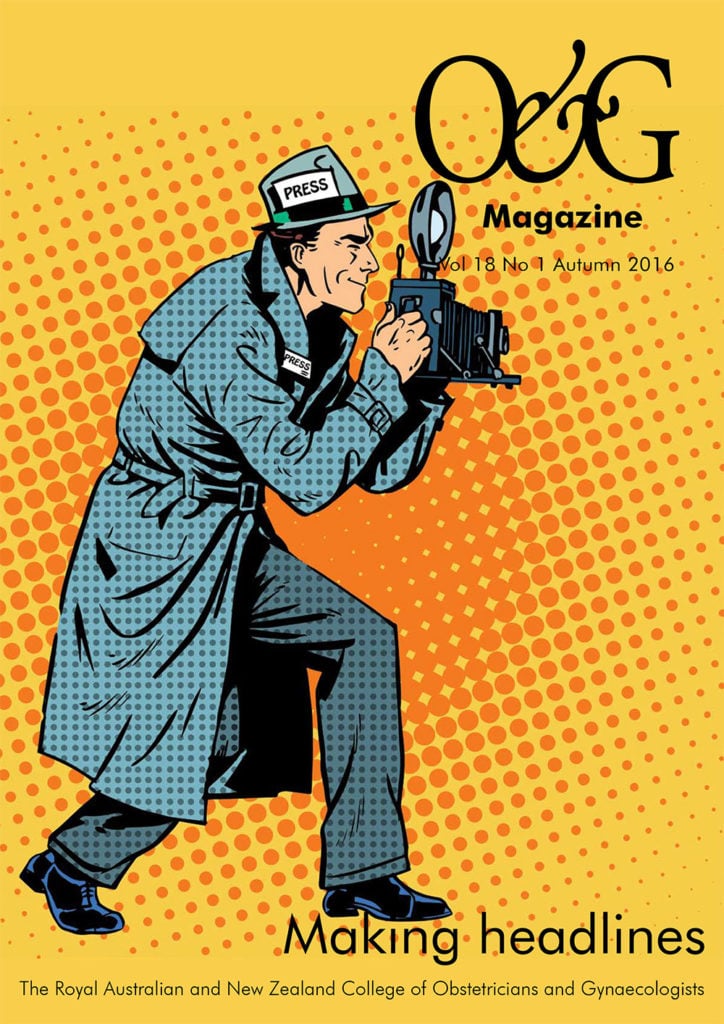‘The freedom of the press works in such a way that there is not much freedom from it.’– Grace Kelly
It was a pleasure to be invited to contribute to this issue’s editorial. As the College’s Media Manager, I have been working at College House in Melbourne for just over ten years. It has been the most interesting and challenging role I have undertaken in the world of media relations.
Not knowing what is going to hit the press at any given moment can be both exciting and nerve-racking. It has been fascinating to see which issues attract media attention and how the general public reacts to a news story that may affect them. I am sure every doctor has patients who come into the consulting room with the words ‘I heard on the news…’ Phone calls at 6am from producers desperately wanting to interview the President for their early morning breakfast show and a half-hour deadline for an expert view on the ‘designer vagina’ illustrate just how diverse, and sometimes challenging, managing media requests on behalf of the College can be.
The College has even made its own headlines with a number of controversies, ranging from whether it supported female genital mutilation to the legalisation of RU486 in Australia. It was imperative during these times that the College adopted a media strategy to ensure the right messages were communicated in the most effective manner – whether that was through press releases or statements posted on the website – and responded immediately to media requests for comment. Managing Director of the Media Angle, Maura Angle, provides us with some very useful basic rules to follow during a crisis.
It is important to ensure the College is both proactive and reactive in its response to media requests on women’s health news that could affect our members and/ or the women they care for and their families. It is vital the College is seen as the expert voice in women’s health and it is my job to ensure the College’s official position is reported. I am very fortunate to have a pool of experts I can call on with a diverse range of knowledge and expertise across the specialty.
I have learned, while you can never tell which story will go viral, babies undoubtedly sell newspapers. The domination of fertility and assisted-reproductive technology (ART) stories in the media from around the world is explored by A/Prof Anusch Yazdani. We also have articles from Profs Rob Norman, Gab Kovaks and Bill Ledger that offer the insider’s view of being in the middle of the story.
All the articles in this issue reflect on the theme making headlines, and I am sure you will go down memory lane when reading these fascinating articles, though perhaps not as far back as the first reported caesarean or use of analgesia for childbirth.
I can comfortably say that the above is all on the record, I am not sure it is going to make headlines, but I guess you will be the judge of that.






Leave a Reply